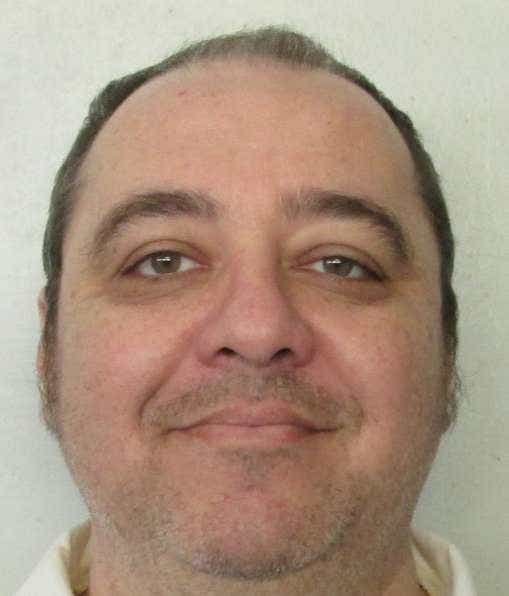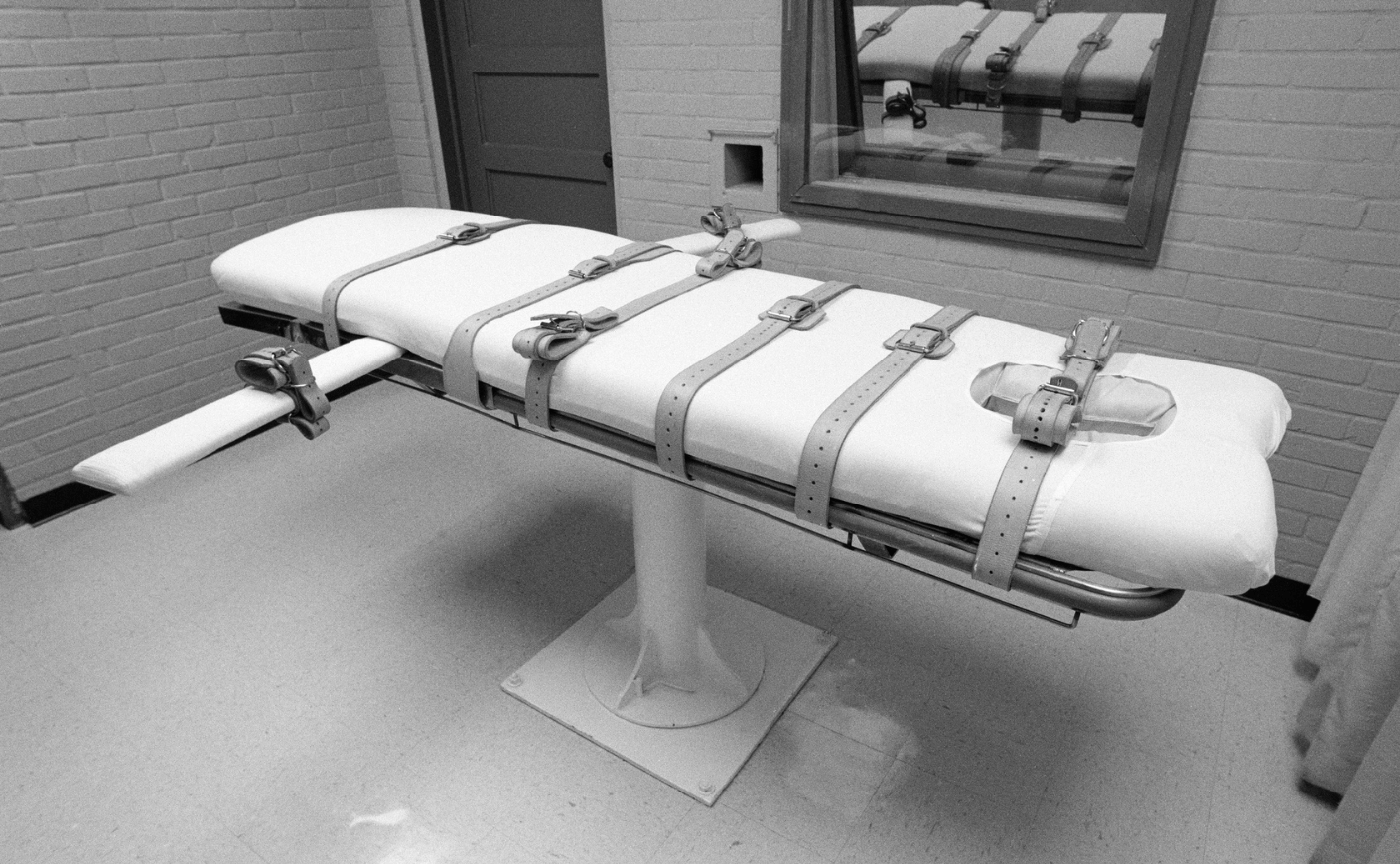Alabama executed Kenneth Eugene Smith late Thursday, making him the first death row inmate to be executed with nitrogen gas. This was carried out despite warnings from both here and abroad that it could be considered a form of torture.
“One thing that isn’t being talked about enough is that when a state like Alabama chooses to use the death penalty, they have an obligation to use it in a constitutional manner,” Robin Maher, who’s the executive director of the nonprofit The Death Penalty Information Center. “And that includes the method of execution that they choose to make sure the people they are executing don’t suffer gratuitous pain and suffering in a torturous death.”
Amid these concerns, here’s a look at why state officials are using this controversial approach in the first place and how it works.
What is nitrogen hypoxia?
A nitrogen hypoxia execution forces an inmate to breathe pure nitrogen, causing them to suffocate and their body to shut down.
While nitrogen is a colorless, odorless gas that makes up 78 percent of the air we breathe, it can be deadly when it’s not mixed with proper levels of oxygen.
Most of what we know about its deadly use has had to do with exposure from industrial accidents. In 2021, six workers at a chicken factory in Gainesville, Georgia died after unknowingly being exposed to a nitrogen leak.
Has nitrogen gas ever been used for an execution?
The short answer is no — it has never been used before on an inmate. Nitrogen gas is considered a relatively new approach to capital punishment, compared to more commonly used forms, like lethal injection and electrocution.
More recently, officials have turned to alternative methods, because many drug manufacturers have prohibited the use of their products to carry out executions or stopped manufacturing them altogether. As a result, some states have revived older methods such as firing squads, while others have introduced new gas-based protocols.
Lethal gas has been broadly authorized as an execution method in seven states, though the last time it was used was in 1999, according to to the Death Penalty Information Center. But only three — Alabama, Oklahoma, and Mississippi — have specifically approved nitrogen hypoxia as an execution method. Senator Trip Pittman sponsored the Alabama bill for this method to be approved in 2018, arguing that it was a “more humane” way to execute prisoners, despite it never having been tested on human beings.

Why is Kenneth Eugene Smith on death row?
Kenneth Eugene Smith was convicted of a gruesome murder-for-hire plot in 1988. Prosecutors said Church of Christ preacher Charles Sennett paid Smith, along with conspirators Billy Williams and John Parker, $1,000 each to brutally kill his wife, Elizabeth. At the time, Charles had hoped to collect insurance money on her, but ended up killing himself after admitting to having an affair.
Williams received a life sentence, while Parker was put to death in 2010. Now, 36 years later, Elizabeth Sennett’s sons, Mike and Chuck Sennett, believe Smith’s execution was long overdue. “Nothing happened here today is going to bring Mom back,” Mike said following Smith’s execution. “It’s kind of a bittersweet day.”
This wasn’t the first time Smith faced execution for this charge. The state first attempted to execute him in November 2022 by lethal injection, but officials called it off four hours later, after prison staff couldn’t find a viable vein to inject him with the drugs. Alabama has botched four lethal injections since 2018, and Smith is one of two death row inmates who survived the ordeal. In the wake of the failed execution, Smith has been experiencing several symptoms associated with post-traumatic stress disorder, including insomnia, anxiety, and depression. “I dream that they’re coming to get me,” he told The Guardian.
What are the risks of a nitrogen hypoxia execution?
While the state of Alabama said the method would be humane, critics have likened it to human experimentation. Smith’s lawyers previously argued that the mask the state plans to use for the execution isn’t airtight and that oxygen could seep in, which could leave him in a vegetative state instead of killing him. The other risk is that the lack of oxygen will cause Smith to throw up inside the mask, leaving him to choke on his own vomit. In both scenarios, his death could be needlessly prolonged, or he could end up surviving yet another execution.
They also voiced concern for the other people in the room administering the execution, which has been echoed by other experts. For Smith’s execution, the state stated that a spiritual advisor couldn’t be in the room without signing an acknowledgment form of the risks. “Nitrogen gas is an odorless and colorless gas, and if the mask becomes dislodged, there’ll be no way to tell that someone else in the room is affected,” Maher tells us.
Other than a 45-minute delay, the execution appeared to go as expected. During a news conference, Alabama Department of Corrections Commissioner John Q. Hamm said that the execution started at 7:53 p.m. and he was pronounced dead at 8:25 p.m. For at least two minutes, Smith appeared to “shake and writhe” on the gurney, followed by heavy breathing before he was no longer audible.
Before his execution, Smith said his final words: “Tonight Alabama caused humanity to take a step backward. I’m leaving with love, peace and light. Thank you for supporting me. Love all of you.” He also made an “I love you sign” with his hands toward his family members who were present.
What are the criticisms of nitrogen hypoxia?
Smith’s lawyers aren’t the only ones speaking out against the new execution method. Experts appointed by the United Nations Human Rights Council cautioned earlier this month that nitrogen hypoxia may violate the international prohibition on torture and other cruel, inhuman, or degrading punishment.
The U.N. also voiced concern that Alabama’s protocol made no provision for a sedative before execution, which is a measure that she said is a formal recommendation of the American Veterinary Medical Association for euthanizing large animals.
Since most of the documentation surrounding the execution has been heavily redacted, much of how Alabama carried out the execution remains a mystery, including critical elements like safety and testing. What we do know is a “full facepiece supplied air respirator” was placed over his face. After he made a final statement, the warden activated the nitrogen gas from another room. It was then set to be administered through the mask for at least 15 minutes or “five minutes following a flatline indication on the EKG, whichever is longer,” according to the state protocol.
It was initially unclear whether the execution would even happen due to ongoing litigation from Smith’s legal team. They had requested that execution be blocked on the grounds that it would violate his right to be free of cruel and unusual punishment under the Eighth Amendment of the U.S. Constitution. But both the Supreme Court and the 11th U.S. Circuit Court of Appeals rejected these pleas to stop it from being carried out.
“We are deeply saddened that the state of Alabama and the Alabama Department of Corrections have executed Kenneth Eugene Smith,” his team said in a statement to CBS News. They stated that the only reason Smith’s life wasn’t spared because of a since-repealed Alabama statute that was used to override the jury.
Now that this form of execution has been carried out, nitrogen gas could become a more commonly used in other states — but Maher says officials may still choose to steer clear. “Other states might not accept the kind of very serious risks that Alabama is accepting by using this method of execution,” she says.









